
Discover the average window treatment cost, including price ranges and key factors, to help you plan your project with confidence.
Find the perfect way to let light in through the largest windows in your home


Nothing beats greeting the day by your patio door with a cup of coffee and a burst of sunshine. Sliding glass doors are excellent sources of natural light and an easy way to showcase your backyard. But such large panels of glass have their downsides. Without the right window treatments for sliding glass doors, you could have a hard time controlling the flow of light, air, and heat.
Check out these 11 ways to stylishly cover your sliding glass doors. If you aren’t sure which is the right choice, contact a local window treatment expert to discuss your unique needs.
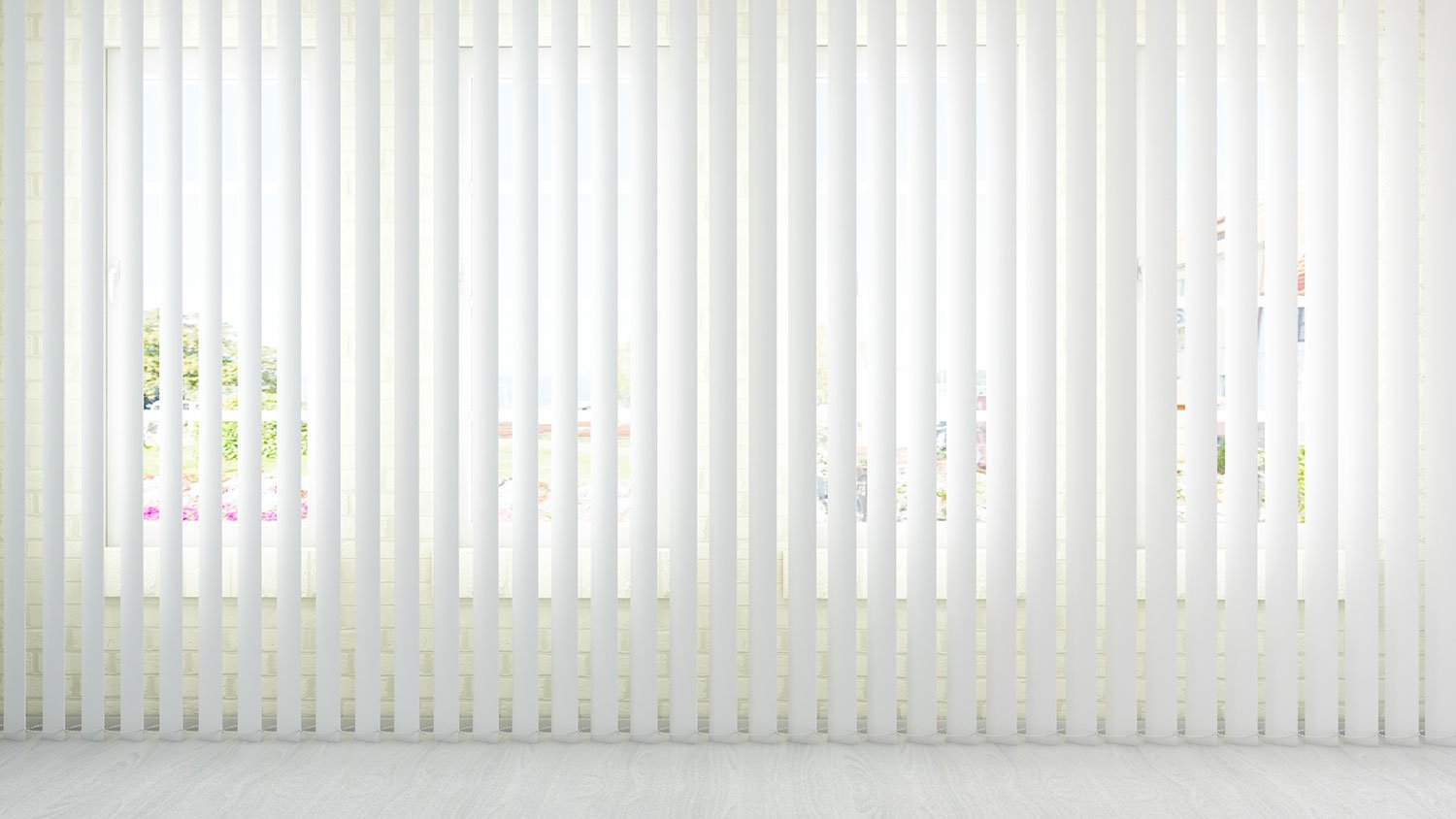
Vertical blinds are the most popular choice for sliding glass doors. Their ease of use and wide variety of colors and materials means that you can always find options to fit your style. Vertical blinds feature plenty of length, which keeps more light out when they’re closed.
These blinds attach to a panel over your windows with slats hanging down to the floor. Their length makes it easier to cover tall sliding glass doors and windows without adding multiple panels of venetian blinds.
Vertical blind slats vary by width, and they typically open with the pull or rotation of a pulley cord or an attached wand, offering significant light control throughout the day.
Since they tend to catch on the track of your door if improperly installed, it's important to keep an eye on the quality of your vertical blinds over time. Regular cleanings will help prolong their lifespan. Consider hiring a local blinds repair team to help you resolve any issues.


Venetian blinds, also called horizontal blinds, consist of a series of slats that you can adjust to change the amount of light coming in. They are a good option for sliding glass doors if you only plan to open one side of the door at a time.
But a heads up: Venetian blinds are not a top pick for sliding patio doors since they go against the direction of the track and can be quite cumbersome to control. You will find other horizontal options on this list that are easier to use.
If you plan to install this blind type for your sliding glass doors, we recommend calling in local window treatment experts for proper measurements. Getting the right Venetian blinds for your sliding glass door is necessary to keep the weight down.
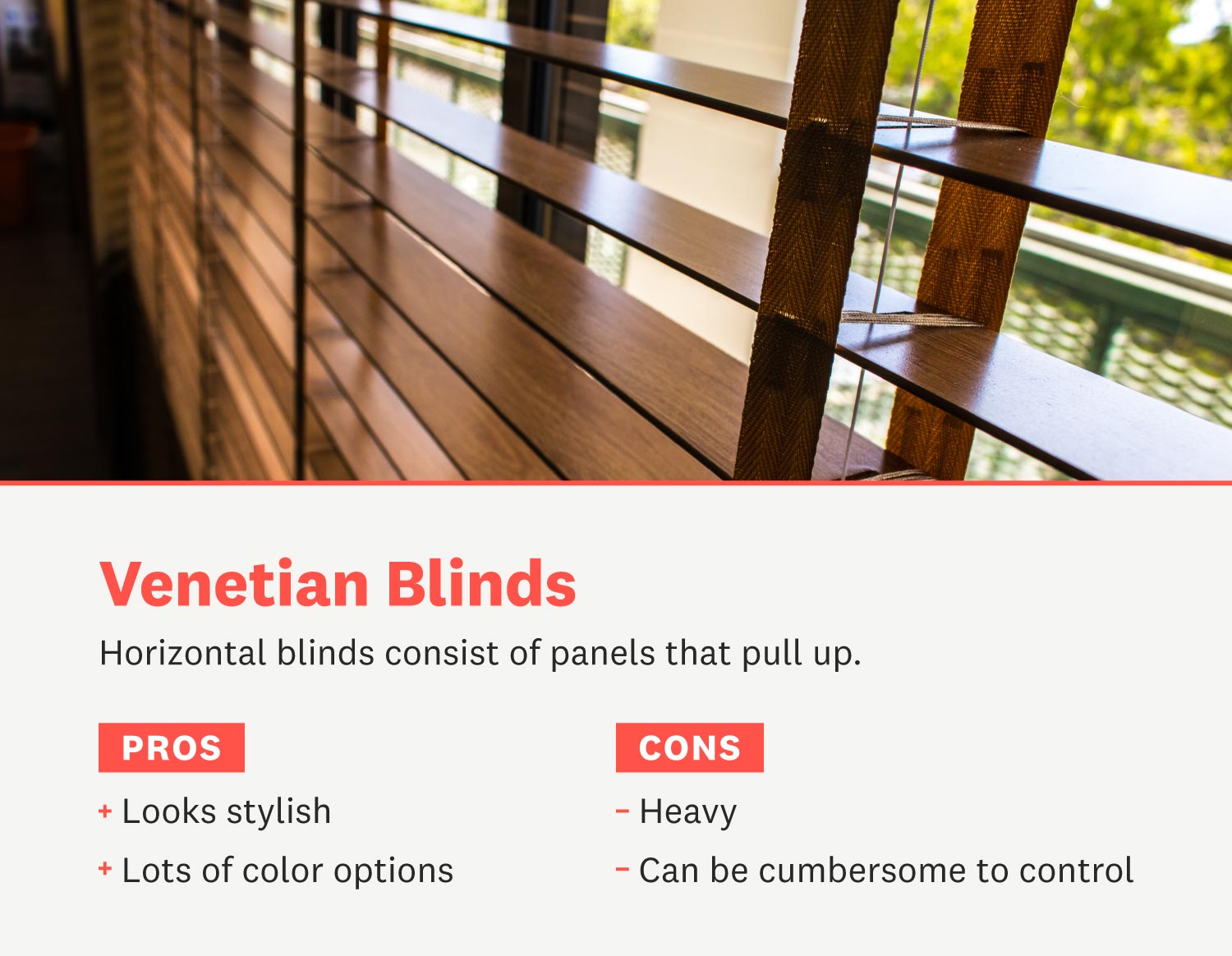
If you're battling the blaring sun in the morning, snowdrifts in the winter, or a lack of privacy from your neighbors, sliding panels may be the best sliding door blinds for you. These individual panels sit on a track and push away from the window in much larger pieces than blinds—typically four or five, depending on your window size.
The panels come in a range of fabrics, woods, or acrylics, and they’re easy to customize to your home's aesthetic. Sliding panel blinds may be one of the most effective ways of blocking unwanted light, but their large size means that more of your sliding glass door will be covered even when the blinds are open.
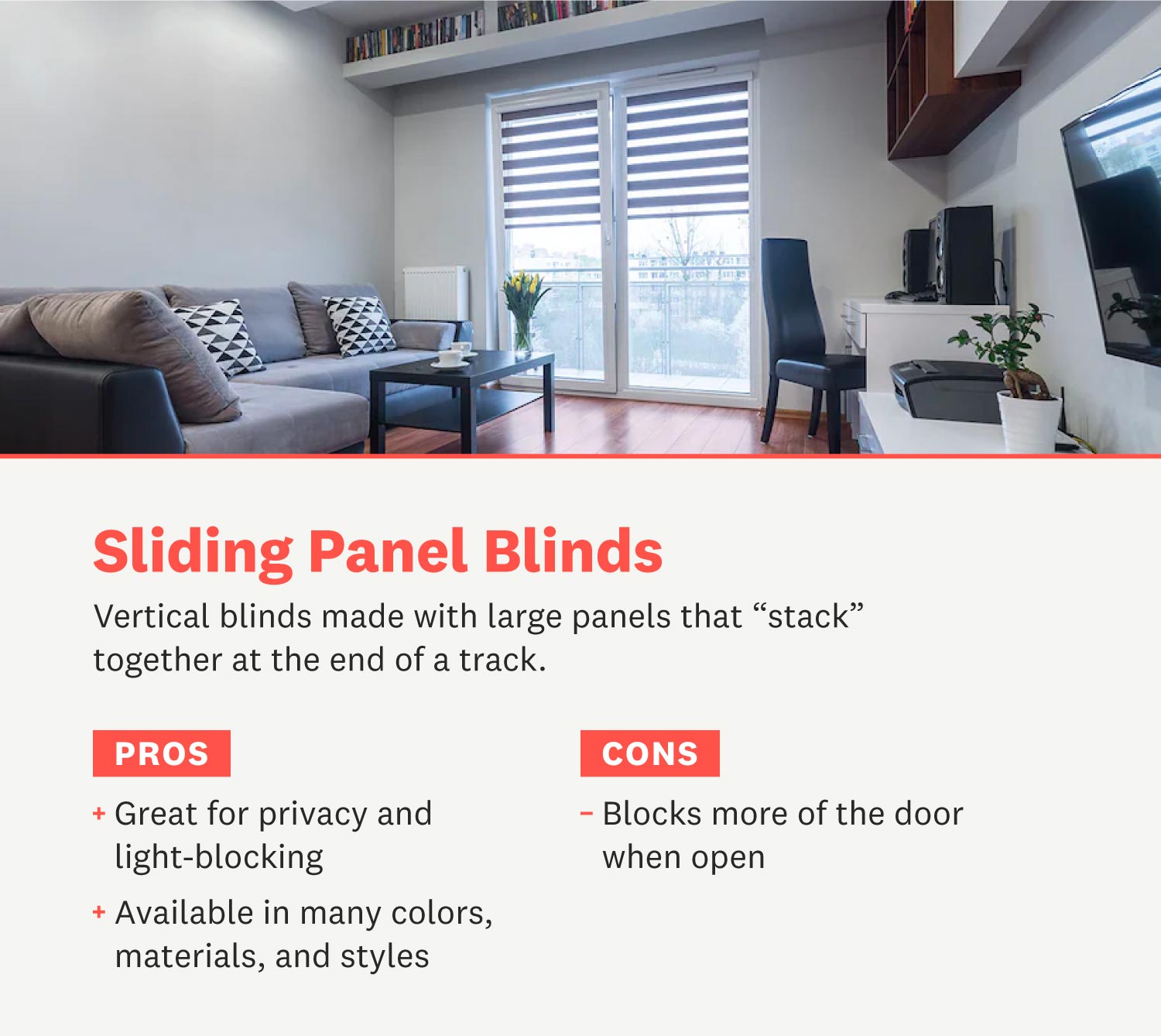
Jumping on the cottagecore design trend? Add a touch of class with vintage shutters to close off your sliding doors. These shuttered panels fold up into an accordion or open outward as doors of their own. Many designs allow you to open and close the shutter slats for a bit of light without giving up privacy.
While these shutters might not be perfect for every home style, they are a very unique and stylish option. Plus, you can pair them with drapes or curtains to provide better light blocking.
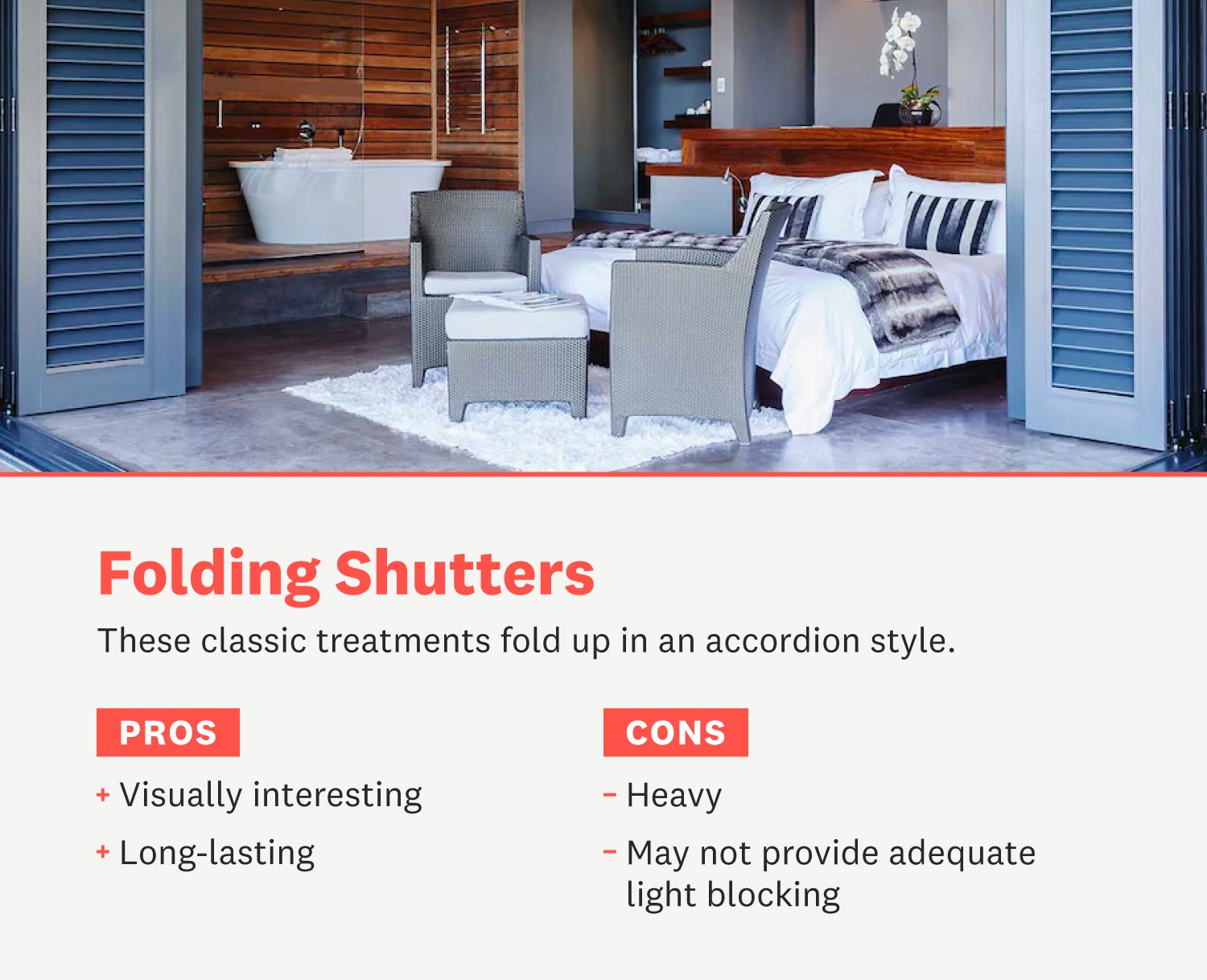
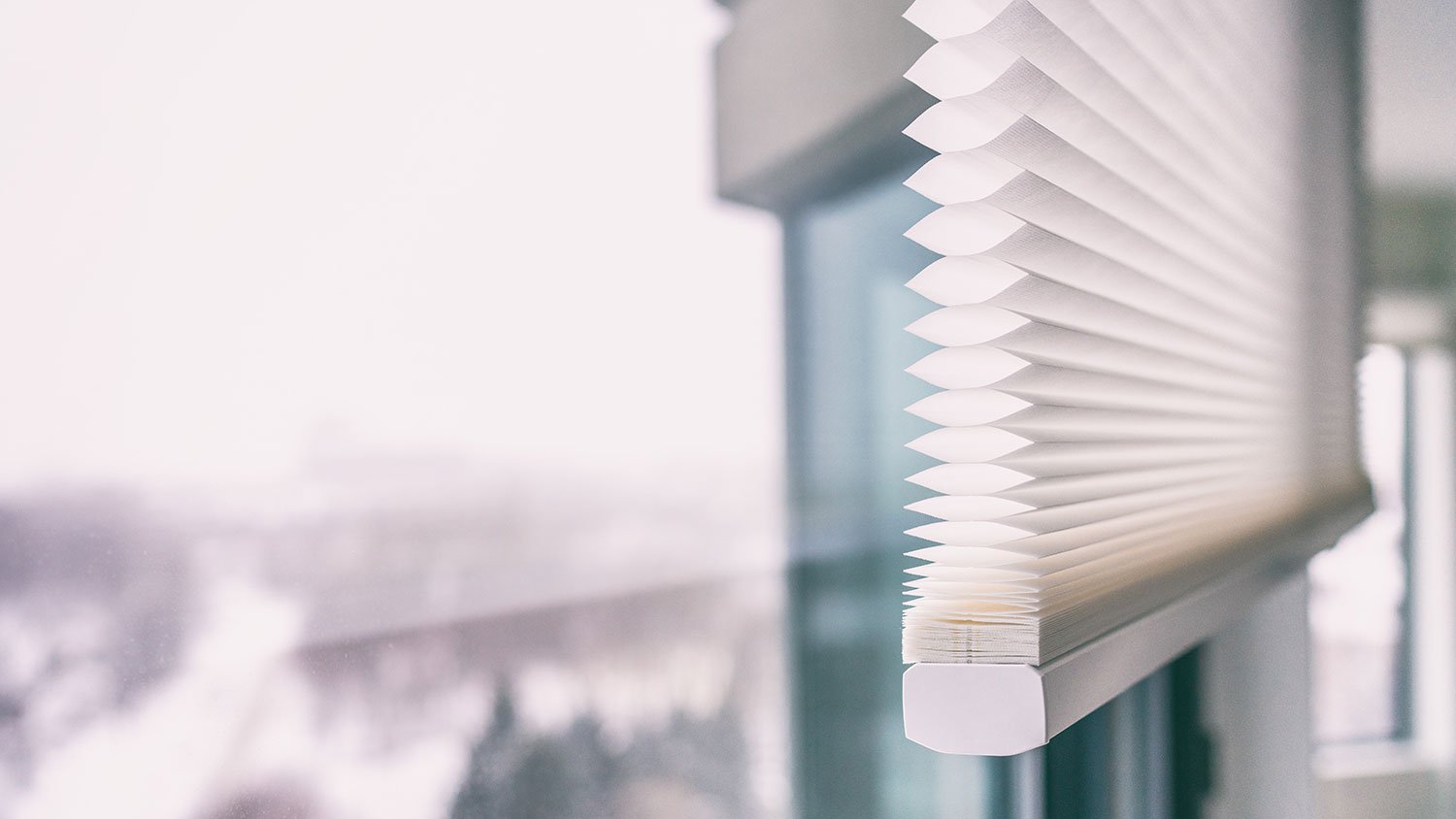
Cellular shades, also known as honeycomb blinds, get a lot of positive reviews for their temperature control skills—and for a good reason. Thanks to the cell structure of these shades, they trap excess hot and cold air to help regulate the temperature in your home.
These shades are available in various structures, typically singular, double, or triple cells. You can pick from several opacity levels and colors and how the shade connects to the walls around your sliding door. Because they are made from a soft material, they can be damaged by pets or if they’re handled roughly. They can be costly, but the energy benefits can help offset some of those costs.
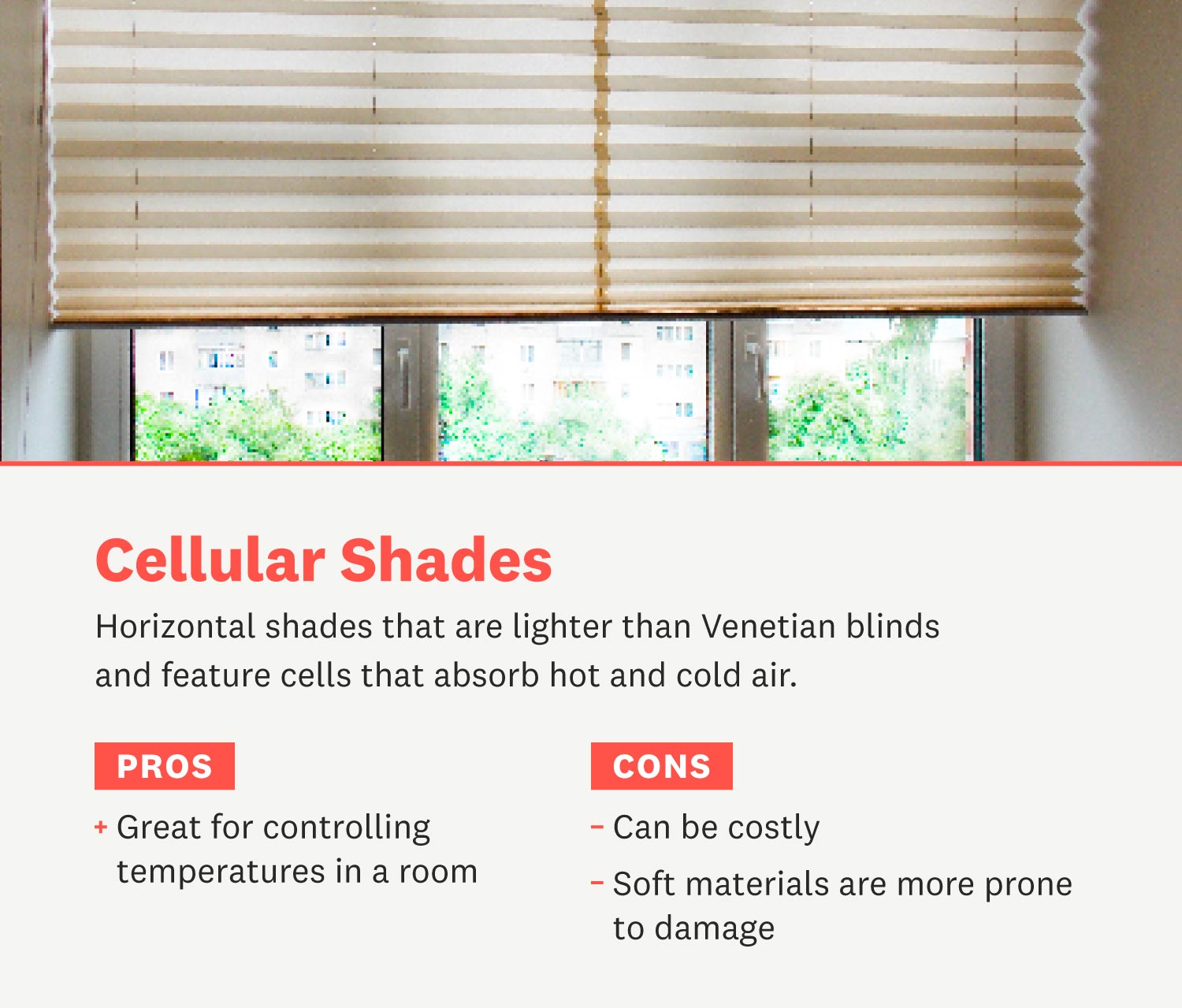
Traditional ceiling-to-floor drapes are some of the best window treatments to install yourself. Drapes are typically lined fabric panels that are fairly formal and reach the ground.
For good temperature control, opt for blackout and room-darkening drapes that protect against the afternoon sun or a drafty sliding door. Remember that you can also double up on window treatments by combining vertical blinds with drapes or roller shades.
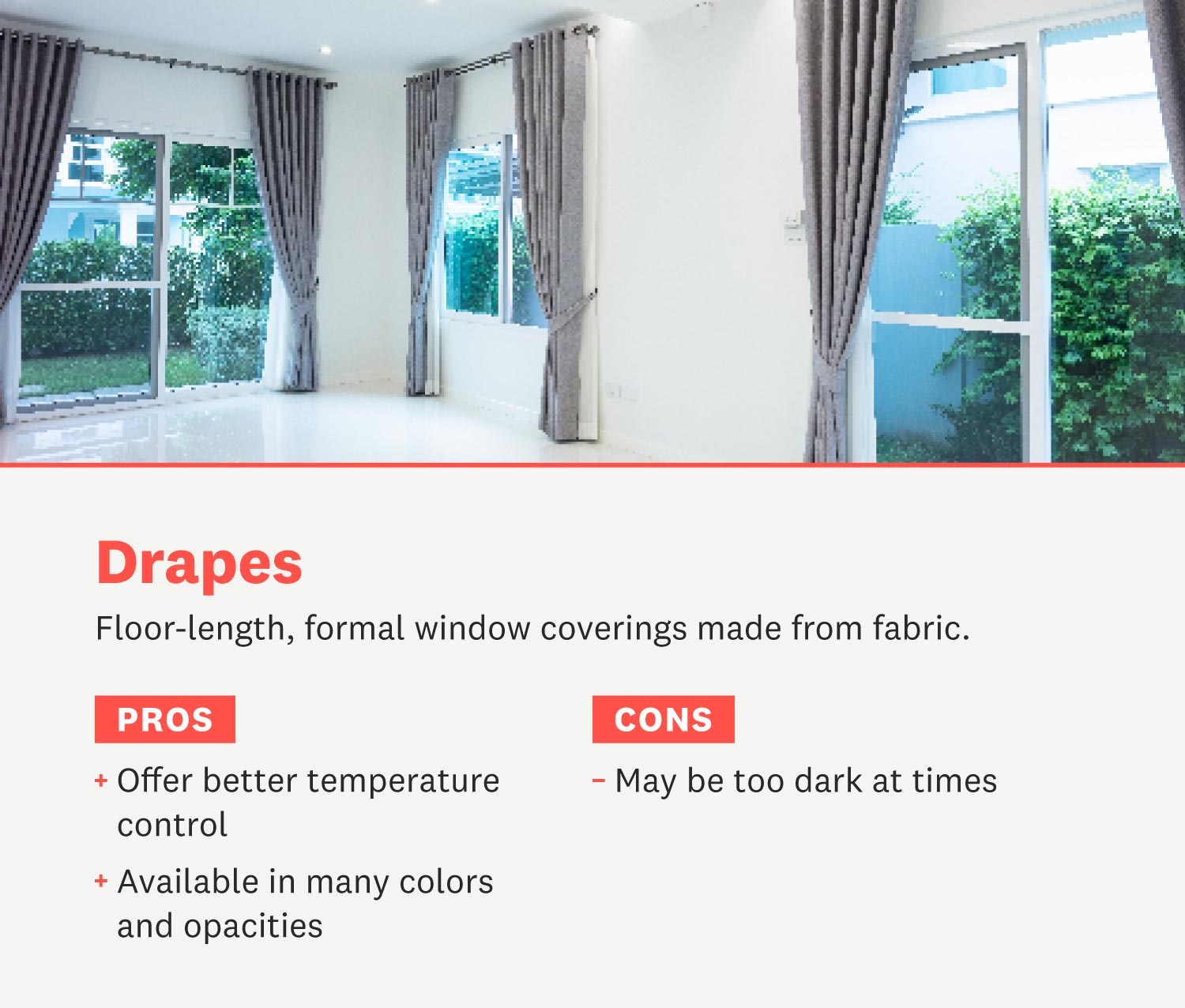
Curtains are similar to drapes in that they are made from fabric, but where drapes are thick and dark, curtains are thin and light. Curtains are also available in several lengths, the most common being slightly longer than the window without reaching the floor.
If you're not concerned about extreme weather, opt for sheer to opaque curtains of your choice to balance out your room's color scheme and welcome in natural light. Or you can pair drapes with curtains if your room would best be served by having options that range from full blackout to something lighter.

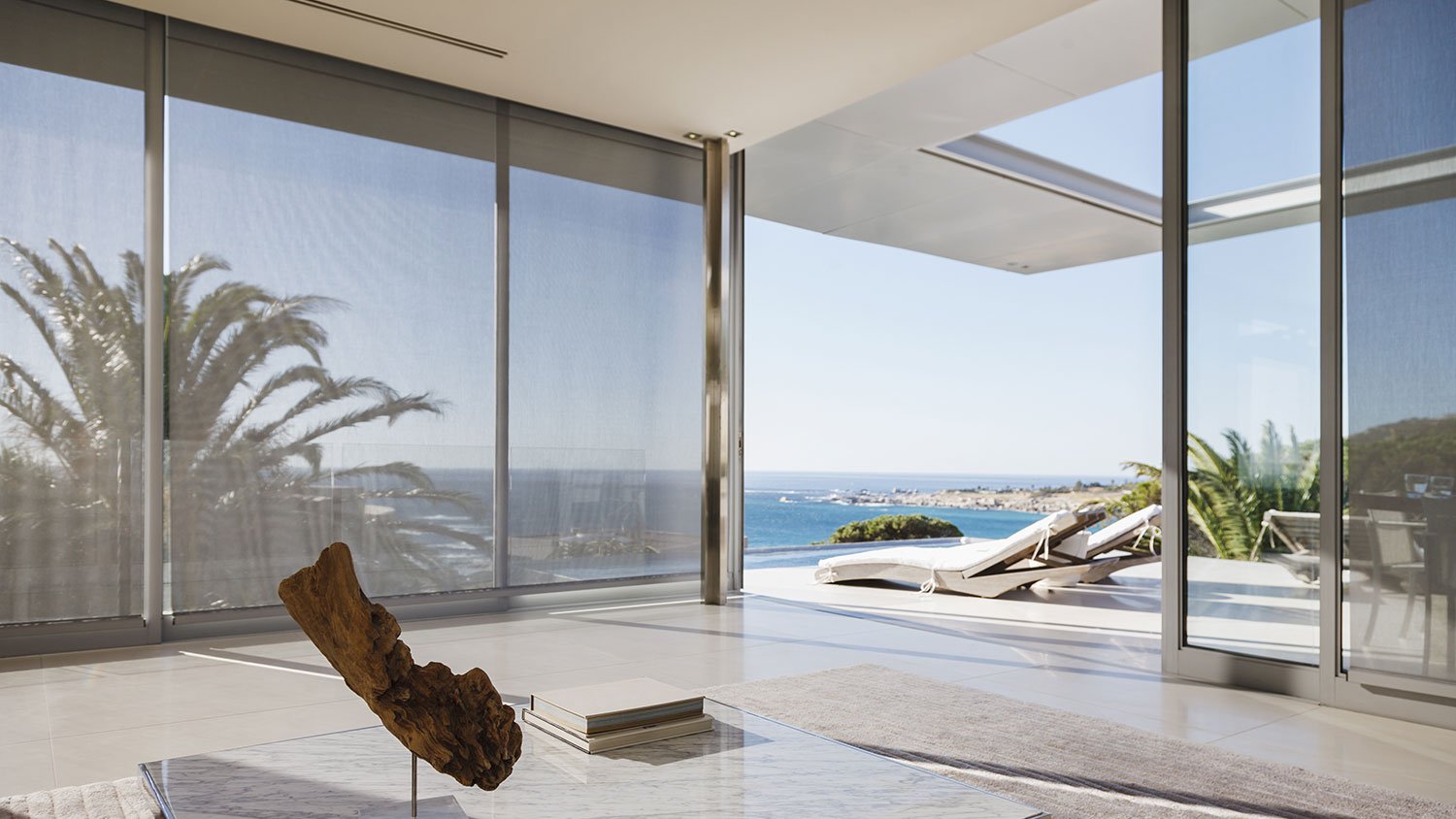
The sleek, single-panel look of a roller shade is a favorite choice among homeowners searching for modern window treatments for sliding glass doors. As the name suggests, roller shades furl into a top panel out of sight.
While roller shades are all-or-nothing when it comes to light levels, they come in a wide range of colors and sheer levels. Their simplicity makes them a bit easier to blend into a monochrome space without the bulky interruption of blinds or panels.
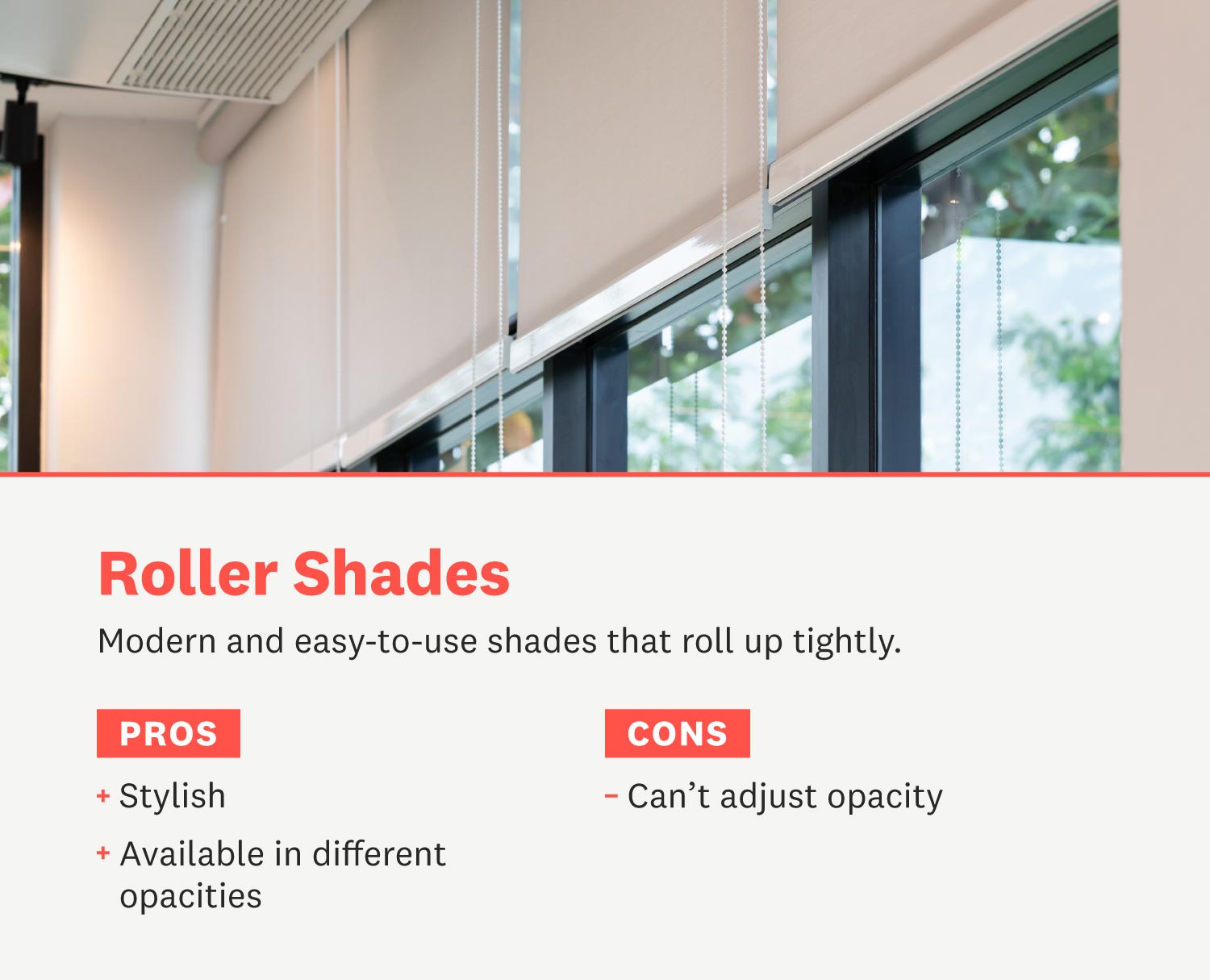

Elegant Roman shades combine the easy glide of blinds and the soft aesthetic of fabric curtains. An inner cord folds the shade in on itself when you pull it to let in light. Roman shades may not roll up into a panel as neatly as roller shades, but they typically come with a top valance to cover up the folded curtain.
For sliding glass doors, choose from one large panel across both sides of the door or two individual ones to provide better control over the amount of light coming into the room.

Blinds and curtains work well when used together. Combining these treatments allows you to control exactly how much light comes in. The ability to combine different colors and styles provides many design options that you don’t have with a single kind of window treatment.
Blinds and curtains aren’t the only combined window treatment idea for sliding doors. Curtains or blinds used with shutters gives you more options for controlling light and privacy, as does pairing vertical blinds and curtains.

Want to have adjustable window coverings without having to worry about cleaning them? If that’s the base, internal blinds and shades are the answers. These window treatments are built between the panes of glass on your sliding glass door. In addition to staying clean, these treatments look great and you won’t have to worry about damage.
However, they can be costly because they require you to replace your sliding glass door. If you’ve been planning a remodel, these treatments give you a style boost and can help make temperature and light control easier in one swoop.
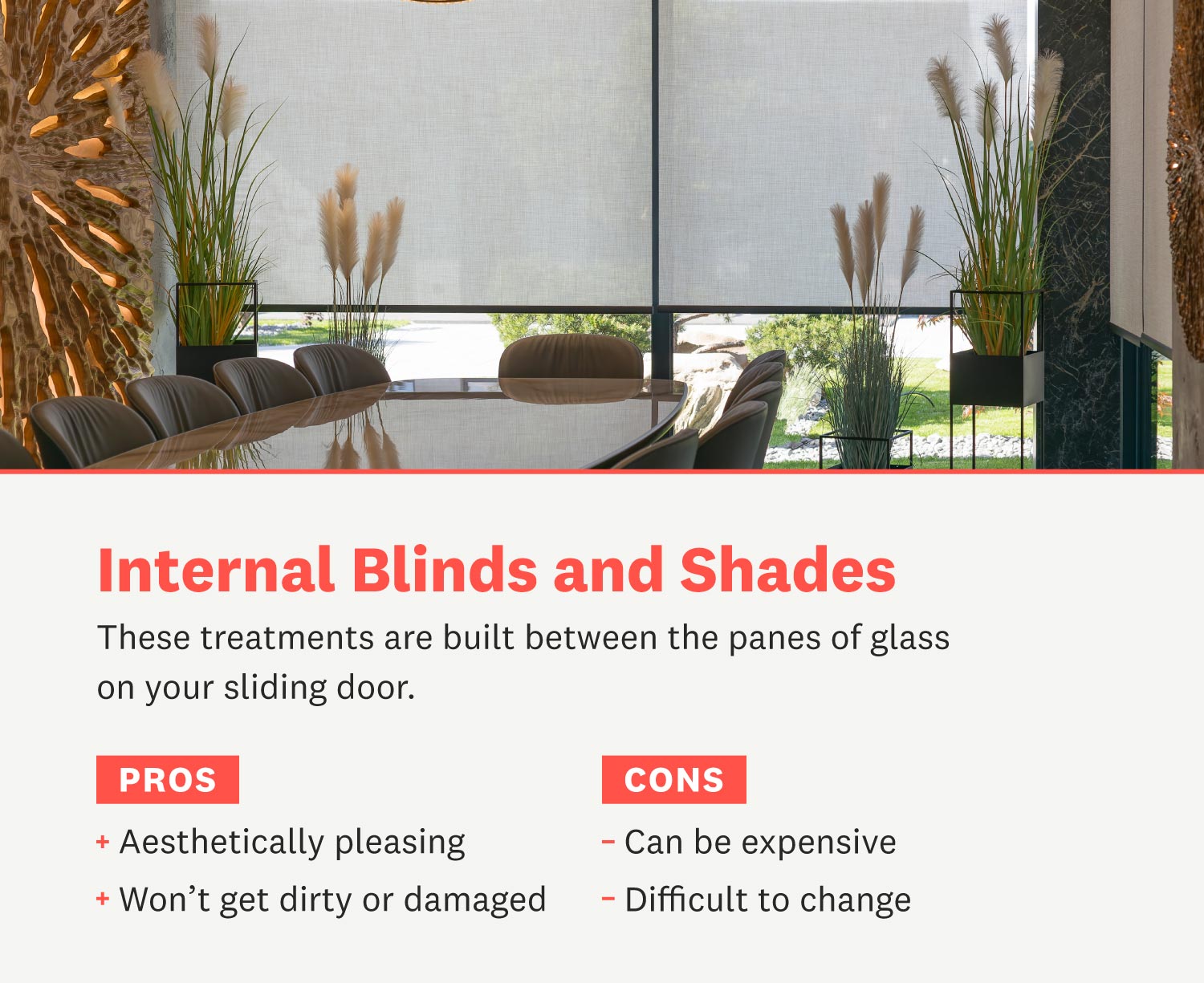
While the most common sliding door window treatment ideas are vertical blinds, this is far from your only option. If you aren’t sure where to start, ask yourself the following questions:
How much light comes through my windows each day?
Do I often find myself wishing a room was darker?
Do I live in a cold climate where I need extra help insulating my home?
Would I like to avoid pulls and cords?
What is the color scheme of the adjoining room?
How often do I want to clean my window treatments?
What window treatments for glass doors have I seen that I liked?
What is my budget for this project?
It's important to keep that last question in mind since the cost of installing blinds and shades averages around $700. The price range will widely vary, however. For example, vertical blinds for sliding glass windows can cost anywhere from $50 to $200 per panel (depending on the size of the panel). The price of custom window treatments can be as much as $3,000 or more.
Updating your window treatments is a project you can take on at any time of the year, but upgrading window treatments during fall can be a good way to save some money on heating costs during the colder months of the year. Autumn or spring are good times to replace windows for maximum energy efficiency during summer and winter.
From average costs to expert advice, get all the answers you need to get your job done.

Discover the average window treatment cost, including price ranges and key factors, to help you plan your project with confidence.

Blinds can help keep your home's temperature comfortable while increasing your privacy. Discover the factors that affect blinds installation costs in Dallas, Texas.

Estate shutters can add a stately appearance to your home and block out light. Learn how much estate shutters cost, depending on window size and material.

Installing blinds lets you control the amount of light and privacy in your room. Learn how to measure for blinds to get the perfect fit the first time.

The differences between light-filtering and room-darkening window treatments are subtle but important. We’re sharing their pros and cons, how they complement your home and help you save on energy costs.

Learn how to remove blinds yourself when you need to clean or replace window treatments.